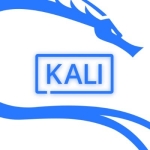What is our primary use case?
We use it to host applications, services, and backend databases. We aren't using it on the cloud. Most of my customers are DoD or some type of government agency. If it's not classified, it's siloed in some way. We don't get to use a lot of the functionality that makes Red Hat cool. It's all disconnected.
In terms of version, currently, mostly everything is on versions 7 and 8. I've started pulling up some of the things from version 9, but that won't go into production for a while.
How has it helped my organization?
We use it because it's stable. That's half the reason, and the other half is because the DoD standardizes on it because it has a support contract, so even though we're forced to use it, it's a very good product, and it's on-prem. We probably would use it anyway.
We needed to host applications, services, and backend databases. We have a lot of Java-based applications, and we wanted something that we could deploy in different places around the world and that everybody standardized. Windows didn't really work for us on that. Most of the time, we're not connected to the Internet. We find that Red Hat or Linux in general works a little bit better for us than macOS or Windows.
It's also across the board a little bit cheaper for what we're using it for. That's a benefit we're getting from it.
We get our compliance from DISA, which is the defense information service agency. They put out security technical implementation guides. There are specific ones for Red Hat Enterprise Linux 7 and 8. The reason we're not using Red Hat Enterprise Linux 9 is that there isn't one for it yet. In terms of how we harden the operating system we're using, it's whatever they tell us to do and then whatever extra we want to do. It's as good as any other Linux other than the fact that it's supported by the DoD. For example, SELinux helps us secure across the board with contacts across different directories and things like that. They tell us how standardized the SD-WAN layout should be. We're able to go a little bit deeper into that. Red Hat uses Podman, which has SELinux, and which by default helps us a lot.
What is most valuable?
We run Satellite on a lot of these, so having a central repository that we can use for patch management and remote execution is huge. That's something that is very difficult in a Windows environment. We're very compliance driven, so to have that built into Red Hat is easy. We don't need an agent or anything like that to get a lot of work done, so Satellite and centralized automation are the most valuable features for us. We're dabbling into Ansible but not as much as we should be.
It's obviously a security-focused operating system versus some of the other operating systems that lay you down in the terminal as root. In Red Hat Enterprise Linux 9, you can't even root. It's disabled by default now. Overall, they are definitely more security conscious, and that's also because of their primary customer space.
For how long have I used the solution?
I've been using it for ten years or so. I've been using the solution since version 6.
What do I think about the stability of the solution?
The stability of what we have deployed is good. The only time it crashes is if we do something or we try to configure a control that one of the engineers doesn't fully understand, which then breaks it. A lot of it's just like us breaking it ourselves or a customer asking for something that wasn't initially planned. Just pure deployment is good.
What do I think about the scalability of the solution?
Its scalability is good. It's what they excel at. If we have 10 machines or 100 machines, they have the platforms to scale that up.
How are customer service and support?
Overall, the customer support is good. It's better than Microsoft support. They are above and beyond that. They are better than others in terms of response time, getting somebody who knows what they're talking about, and not spinning their wheel. Usually, within the first response or two, people figure out what we're trying to troubleshoot here. We're not going from one queue to another queue or anything like that.
I'd rate them a ten out of ten. I've never had an issue with it.
How would you rate customer service and support?
Which solution did I use previously and why did I switch?
We had CentOS systems. When they changed upstream, we had to pivot some systems. We pivot some systems to Oracle Enterprise Linux, but then those eventually got transitioned to Red Hat as well.
The main reason for the switch to Red Hat was for the government customer and having a support contract. You can do Oracle Enterprise Linux without a support contract, but if you're going to buy one, you might as well get Red Hat at that point for the added benefits.
We use Kali for a couple of other use cases, and we probably won't replace it with Red Hat.
We've used a lot of flavors of Linux. One thing that sticks out for me, even in just the home lab environment or deploying at work, is that if there's some backward thing that we weren't planning on going into, if I look for a solution, nine out of ten times, I'm going to find an article on Red Hat's website where somebody has either a verified solution or somebody is talking about it and there are comments that are relevant. I hate going on ServerStack, Ubuntu Stack, or something like that, where somebody has the exact problem that you have, but there are no comments and no answers. I find that to be less true with the Red Hat platform.
How was the initial setup?
The initial setup is pretty straightforward but can be tedious at times because of the compliance things that we have to implement.
I just sat in on the training or the demo for the deployment platform, and we're already planning on setting up the Ansible automation platform where we also want to look into setting up this deployment tool because we do a lot of ISOs. We do a lot of kickstarts. We don't do any of the cloud tenants. We probably will switch to using the on-premise disconnected deployment capability because we can preconfigure everything and then run Ansible after the fact to get it all compliant.
What about the implementation team?
We're the integrators or implementors of the solution.
What was our ROI?
We're forced to buy the licensing, but it's also good. I and a couple of other staff members are all Red Hat certified engineers, and then we all have our own specialties, so we don't call them a lot, but when we submit tickets, it's definitely worth it.
The ROI is mainly in terms of needing to recover from any system downtime. If we don't have an engineer on a computer doing a certain piece of research, then we're wasting money or just not generating a product, so to have the support that we can call and then reach out to us in enough turnaround time holds value for us.
What's my experience with pricing, setup cost, and licensing?
The pricing is fair. The workstation licensing cost is fair. If you're running enterprise-level deployments, depending on what you're using, the volume licensing is good. I personally am worried that if they get so successful, they can increase the price, and then it won't matter because we'll be stuck on them. Hopefully, their open source mentality keeps that from happening. Where it's right now is good.
What other advice do I have?
In terms of the portability of applications and containers built on Red Hat Enterprise Linux, I don't know how much that applies to us. In our case, someone develops an application in a Podman container, and we ingest that and run it, but we're not doing much more than that. So, all of the Java-based applications that we run, are run within a couple of different containers, and that's about it.
I personally use Red Hat Insights in my home lab. We can't dial out for that for a lot of customer-based work, but I personally use it. It hasn't helped avoid any emergencies because it's super low risk for what I'm using it for, but I can see the benefit of it. In a more enterprise setup, such as health care where I used to work, things probably would have been interconnected, and we would have been using Insights, but we're not using it currently.
Overall, I'd rate Red Hat Enterprise Linux a 10 out of 10.
Which deployment model are you using for this solution?
On-premises
Disclosure: My company has a business relationship with this vendor other than being a customer. Partner

















